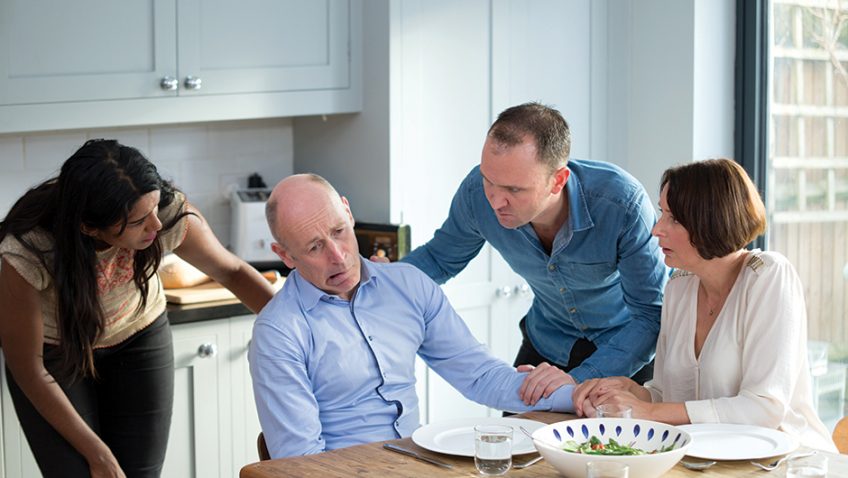This month, wear purple to show support for the Stroke Association’s Make May Purple for Stroke awareness campaign.
Stroke is a major health issue, is the fourth biggest killer in the UK and a leading cause of disability. The damage caused by a stroke can affect people’s ability to walk, talk and even eat. It makes them reliant on others to go about their daily lives and can also change the way they think and feel.
Many stroke survivors will need long-term support to help them overcome these life-changing physical and emotional difficulties. Make May Purple for Stroke raises awareness of the challenges of life after a stroke and raises vital funds so the charity can help more stroke survivors rebuild their lives and regain their independence.
How to recognise the signs of a stroke:
A stroke is a medical emergency. Using the FAST test is the best way to spot that someone is having a stroke.
- Face: Can the person smile? Has their face fallen on one side?
- Arms: Can the person raise both arms and keep them there?
- Speech problems: Can the person speak clearly and understand what you say? Is their speech slurred?
- Time: If you see any of these three signs, it’s time to call 999.
Understand the risks:
A stroke can happen to anyone at any time, but some things can increase your risk.
- Your age: Most people who have strokes are aged over 55 and the risk increases as you get older. This is because our arteries naturally become narrower and harder as we age.
- Medical conditions: Certain medical conditions can increase your risk of stroke. These include high blood pressure, diabetes, atrial fibrillation (a type of irregular heartbeat) and high cholesterol.
- Lifestyle factors: The way we live has a big impact on our risk of stroke. Things like smoking, drinking too much alcohol, being overweight and eating unhealthy foods can damage your blood vessels, increase your blood pressure and increase the chances of blood clots.
Reduce your risk:
It’s never too late to take control of your health. While there are some stroke risk factors you can’t control, such as age, there are several risk factors, such as poor diet, high blood pressure and diabetes, which if managed effectively, can reduce stroke risk. For example, damage caused by smoking is not irreversible. Having a healthy diet can reduce your cholesterol.
High blood pressure does not have any symptoms so the only way to know if you have it is to have your blood pressure measured regularly. This can be done by your GP or local pharmacy or you can check it yourself with a home testing kit.
And remember, it’s important that people who are at a higher risk of stroke try to be as active as possible, as moderate exercise can reduce a person’s risk of stroke by almost a third.
To find out how you can Make May Purple for Stroke visit www.stroke.org.uk/makemaypurple





